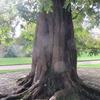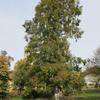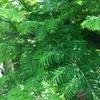Great choice! We're adding your items to the basket and working out what else you might need to plant it.
Dawn Redwood Metasequoia glyptostroboides
Example photos only. Size, stem height and habit may vary.
Please contact us for photos of current stock.
Select plant type
Quantity
British Grown – The British Grown logo denotes plants and trees that have been both propagated and grown in the UK. Read more
Product Description
METASEQUOIA GLYPTOSTROBOIDES – Dawn Redwood
Characteristics
The Dawn Redwood has the familiar conical coniferous shape, with sparse upward sweeping branches giving the tree a narrow form. The leaves which are short, broad needles, could be mistaken for those of the Yew. However, this mistake should only be made in the summer for unlike its redwood cousin, the Sequoia, Metasquoia is a deciduous conifer whose needles turn a reddish-brown before falling off in the autumn.
In this respect it is also similar to Swamp Cypress (Taxodium distichum) with which it also shares a liking for wet even boggy ground.
Where to grow
Dawn Redwood will grow in most situations, it will grow best in deep loamy moist soils, it does not like dry soils but will cope well with waterlogging even to the extent of growing in standing water.
Did you know?
The Dawn Redwood is in some ways a botanical oddity as it is the only living member of it genus.
The genus Metasequoia was first described as a fossil from the Mesozoic 65 to 200 million years ago, however in 1943 a small stand of an unidentified tree was discovered in China in Lichuan County, Hubei these were not studied further until 1946 and only finally described as a new living species, Metasequia glyptostroboides in 1948.
In 1948 the Arnold Arboretum of Harvard University sent an expedition to collect seeds and, soon after, seedling trees were distributed to various universities and arboreta worldwide for growth trials. It is now widespread in parks and gardens throughout the world. The largest specimen in the UK currently 25m (80ft) tall.
Features
-
Mature Height
- Very Large - 20 metres+
-
Spread
- 10-15metres
-
Shape / Habit
- Pyramidal
-
Growth Rate
- Fast
-
Soil Type
- All soil types
-
Sun Levels
- Full sun
-
Difficulty / Hard to Grow
- Easy
-
Evergreen / Deciduous
- Deciduous
-
Autumn Colour
- Orange
- Yellow
-
Leaf Colour
- Green
-
Foliage
- Fine/Light leaf
-
Uses
- Parkland Tree
- City/Urban Sites
- Country/Farmland
-
Season
- Autumn
- Summer
-
Moisture Levels
- Wet/Water logged sites
Aftercare
For the continued healthy growth of your trees, shrubs or hedging it is vital that you follow the advice below.
Watering
The main reason that plants die within 12 months of having been planted is lack of water. It is essential throughout the spring and summer, to give a heavy enough watering to enable the water to penetrate right down to the deepest root level of the tree. In hot dry spells give the equivalent of 2 bucketfuls every three days.
Weed Control
One of the most common causes of lack of water is competition from grass. When trees are first establishing, the grass roots would be at the same level as the tree roots and are far more efficient at taking up water and thus choke the tree. It is vital that for at least 3 years after planting your tree or hedge has a circle or strip one metre wide completely free of grass.
- Mulch mats are an effective way to stop grass and weeds, although they will require a careful eye to make sure they continue to work. After clearing the ground around the tree, firmly fit the mat by tucking the edges into the soil and put a thick layer of bark mulch on top of this. Be careful not to allow the woodchip to touch the stem as it can cause rot.
- Weed killer is very effective, however it is harmful to the environment. Organic weed killers usually do not kill roots. Weed killer needs to be applied each year for the first 3 years, preferably when the tree is dormant, or just once before applying a mulch mat.
- Mowing or strimming is NOT an answer to the problem. Each time you mow, the grass will grow back more vigorously and strimming invariably leads to lacerated trunks.
Staking
If trees are not correctly secured they will rock in the planting pit. Roots not firmly in contact with the soil are unable to take up moisture and nutrients, resulting in die back or death of the tree. Check, particularly after windy weather, that stakes are still solidly in the ground keeping the base of the trunk firm. The purpose of the stakes is to anchor the roots. Flexing in the wind, higher up the trunk, is not necessarily a problem if the roots are firm.
Bellow is list of the correct system to use to secure your trees.
- 40/60, 60/80, 80/100 whips - Unless rabbit/deer problem no need to stake.
- 100/125, 125/150 1.2m Cane and Easi tie.
- 150/175 1.2m square stake and a buckle tie and spacer.
- 175/250, 6/8, 8/10 15L 1.65 Tree stake and a buckle tie and spacer.
- All larger trees. 2 x 1.65 Tree stake and cross rail with 38mm cushion spacer and 1m of 38mm strapping.
Ties
Always use our recommended tree ties or strapping. These are designed and manufactured with the correct amount of give to hold the tree firm without strangling it. They should be checked at the end of each growing season for adjustment as the trunk thickens. Non proprietary materials such as baler twine will cut into the bark and should not be used.
Protection from Animal Damage
Rabbits, deer, sheep, cattle and horses can all potentially damage trees. Ask us for advice on the most appropriate guards for your trees or hedge. Squirrels are also a terrible pest when trees get to about 20ft tall but there is no protection available.
Are the delivery costs the same no matter how many plants I order?
Yes the delivery costs stay the same no matter how many plants you have on your order. They are worked out based on your distance from our nursery and can be found here.







